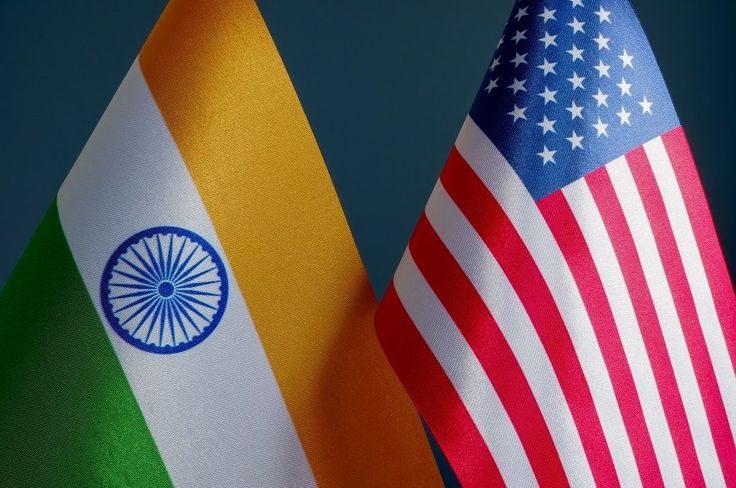In a significant development that could reshape global trade dynamics, the much-anticipated India US trade agreement is inching closer to reality. According to Arvind Panagariya, chairman of the 16th Finance Commission and a prominent economist, the deal will be a landmark achievement for both nations, opening vast opportunities in investment, market access, and long-term strategic collaboration.
Speaking at a recent event hosted by the Indian Consulate in New York, Panagariya described the India US trade agreement as a major step forward that could pave the way for liberalization, economic acceleration, and heightened global competitiveness. He emphasized that this agreement, if finalized, will mark a new chapter in India US economic relations.
A Milestone in Bilateral Trade
Over the past 20 years, the bilateral trade between the US and India has grown exponentially. The entire value of goods traded between the two nations reached $129.2 billion in 2024 alone, indicating a steady increase. India sent $87.4 billion worth of commodities to the United States, while the United States sent $41.8 billion worth of goods to India.
Panagariya highlighted that with the India US trade deal 2025, India will become an even more attractive destination for global investors. The United States and the European Union are two of the biggest markets in the world. Once India secures trade agreements with both, it will position itself as a truly global economic powerhouse,” he said.
Trade Deal Will Unlock New Growth Paths: India US trade agreement

The proposed India US free trade agreement is expected to bring about substantial tariff reductions and remove existing trade barriers, especially in sectors like pharmaceuticals, defense, technology, and agriculture. According to Panagariya, the deal would effectively reduce border tensions around tariffs and compliance regulations, giving businesses from both nations a more stable and predictable trading environment.
“This is not just about reducing tariffs; it’s about transforming the investment landscape and deepening trust between the world’s largest democracies,” he noted. “The impact of India US trade agreement will be visible in the increased pace of liberalization and new job creation across industries.”
Strong Political Backing and Strategic Timing
The agreement also enjoys strong political momentum. Former U.S. President Donald Trump and his administration, including Commerce Secretary Howard Lutnick and Treasury Secretary Scott Besant, have repeatedly indicated their support for finalizing a deal. In fact, Trump recently remarked, “We are very close to reaching a deal with India where they will open up their markets. It’s coming very soon.”
Panagariya believes that once this agreement is sealed, it will also ease negotiations with the European Union, potentially leading to another historic trade pact for India. “The India-EU deal will become far easier to finalize once the U.S. agreement is in place,” he said.
Economic Transformation by 2047
Panagariya also elaborated on India’s broader economic vision, aiming to become a developed nation by 2047. With consistent GDP growth at 7.8% per annum, India is projected to surpass both Japan and Germany by 2027, becoming the world’s third-largest economy.
With a current Gross National Income (GNI) of $3.91 trillion, India is behind Germany ($4.66 trillion) and Japan ($4.19 trillion). However, with a robust digital infrastructure, rapid urbanization, and strong savings rates among its young population, India is poised for long-term prosperity.
He also pointed out the huge gap in per capita GDP between India ($2,780) and other developed economies like the U.S. ($82,770), Germany ($53,340), and South Korea ($33,120), which indicates significant headroom for future growth.
Digital & Infrastructure Push to Bolster Trade
One of the standout advantages for India is its scalable digital public infrastructure. From UPI to Aadhaar, India has rapidly built a strong digital ecosystem that supports high-volume, low-cost transactions across both public and private sectors. This gives it a unique edge in the global trade landscape.
Additionally, infrastructure development in roads, railways, and aviation is accelerating, reducing logistical costs and enabling faster movement of goods crucial for the success of any large-scale trade agreement.
Challenges and the Road Ahead
Despite the optimism, Panagariya acknowledged the challenges ahead. India’s economy needs to shift from being based on agriculture in the countryside to being based on industry and services in the cities. Creating high-paying jobs in manufacturing and services is our biggest challenge,” he said.
Labor reform implementation, faster urbanization, and upskilling of the workforce will be crucial to unlocking the full benefits of the India US trade agreement.
Meanwhile, Commerce Minister Piyush Goyal has stated that negotiations are progressing well, describing recent talks in Washington as showing “exceptional momentum.” Prime Minister Narendra Modi also affirmed that India is on track to finalize a “mutually beneficial” trade deal with the European Union by the end of this year.
A New Era of Strategic Trade: India US trade agreement

As global power dynamics shift, the India US trade deal 2025 represents not just an economic pact, but a powerful geopolitical alignment. With growing tensions in other parts of the world, India and the U.S. are poised to lead a new era of stable, rules-based trade.
If the deal is finalized, it will serve as a defining moment in India US economic relations, strengthening mutual trust and creating a ripple effect of prosperity that could last for decades.
